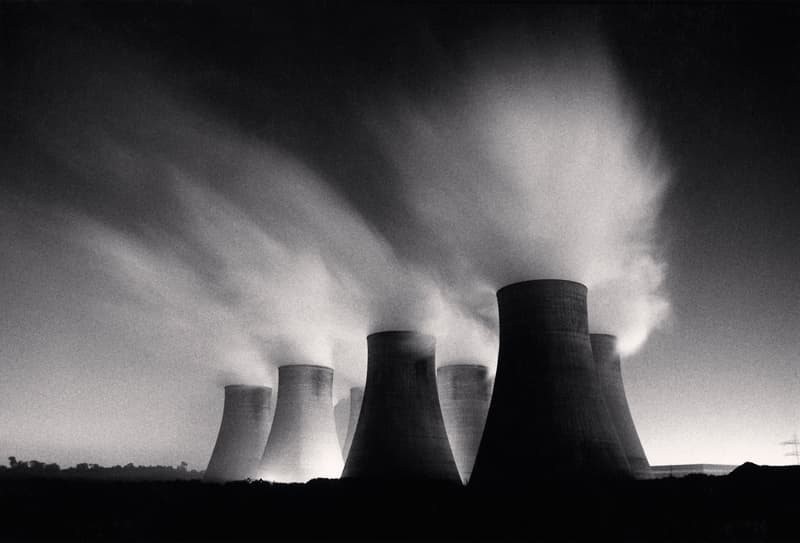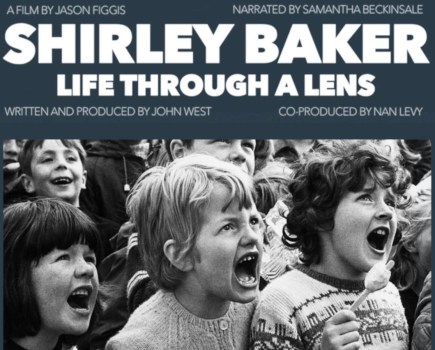Image: Ratcliffe Power Station, Study 19, Nottinghamshire, 1984 © Michael Kenna
Michael Kenna is one of the most successful and influential landscape photographers working today. His prolific 35-year career has seen him travel widely and produce around 20 books, while his images are equally at home on gallery walls or in high-profile advertising campaigns.
Kenna’s success hasn’t resulted from adapting his style and techniques to suit the market; it has come about from doing things his own way. In an age when digital technology has made photography faster and easier, he prefers a slow and methodical approach. His landscape photographs, all shot on black & white film with exposures sometimes several hours long, are processed and printed in a wet darkroom.
Photography is also, for Kenna, about being solitary and far removed from the distractions of modern life. ‘The world is pretty chaotic, seemingly always speeding up and getting louder and more visually dense,’ he said in a 2009 interview.
‘I am interested in finding and/or creating calm shelters from the storm, places where quiet solitude is encouraged and inner contemplation is possible. I think we could all use a break from time to time.’
Kenna describes his connection with the landscape in almost spiritual terms and aims for a ‘meditative’ and ‘Zen-like’ state of mind when photographing. His interest in spirituality goes back to his childhood in the industrial Lancashire town of Widnes, when he formed an early ambition to become a Catholic priest.
At the age of ten he began training at a Roman Catholic seminary, but in his mid-teens he realised that his real passion lay in creating works of art. He went on to study at Banbury School of Art in Oxfordshire, where he took his first photographs and developed a strong interest in the medium.
This was followed by a three-year photography degree at the London College of Printing, which was mainly focused on commercial photography. After graduating in 1976, he was employed as an assistant to advertising photographer Anthony Blake and worked on his personal landscape photographs in his spare time. Following a move to San Francisco in 1977, Kenna further developed his ideas while working as a printer to American photographer Ruth Bernhard.
 Image: Tree portrait, Study 5, Wakoto, Hokkaido, Japan, 2005 © Michael Kenna
Image: Tree portrait, Study 5, Wakoto, Hokkaido, Japan, 2005 © Michael Kenna
Bernhard had a great influence on his work. In particular, she instilled in him the idea that a negative is merely the starting point for a print and something that can be manipulated or even transformed to achieve a desired effect. ‘She refused to believe that something was not possible,’ he has said. ‘You could have a background that was white and she would want it black.’
Inspired by her example, Kenna began to work on the principle that photography was about creating a personal vision of the world rather than simply recording it. ‘I prefer the power of suggestion over description,’ he said in a 2003 interview for Lens Work magazine. ‘I think one of photography’s strongest elements is its ability to record a part of the world, but also to integrate with the individual photographer’s aesthetic sense.
‘The combined result is an interpretation – and the interpretation, I think, is what is interesting – when the subject goes through the filter of an individual human mind and emerges in a changed state, not the duplication or the recording of something.’
He printed for Bernhard for eight years and during that time built up an impressive portfolio of his own work, shot particularly in the USA and UK. Afterwards, as he became established as a fine-art photographer in his own right, he began travelling to more remote locations for his images. In particular, he developed a love of the Japanese landscape.
 Kenna is best known for his sparse, minimalist scenes, defined by a small number of elements, such as a line of fence-posts or a group of trees in a snowy landscape, or a jetty stretching out into a placid lake. He has described these scenes as ‘visual haiku poems.’
Kenna is best known for his sparse, minimalist scenes, defined by a small number of elements, such as a line of fence-posts or a group of trees in a snowy landscape, or a jetty stretching out into a placid lake. He has described these scenes as ‘visual haiku poems.’
Image: Portrait of Michael Kenna, taken in Biei, Hokkaido, Japan, 2009 © Mark Silva
Throughout his career he has also found beauty in cityscapes and industrial landscapes, such as his ethereal studies of cooling towers at Ratcliffe Power Station in Nottinghamshire He often uses long exposures to capture ‘what is impossible for the human eye to see – cumulative time.’
He has mainly used a Hasselblad for his work since the mid-1980s and from the resulting 21⁄4 square negatives he makes prints no larger than around 8x8in. He prefers black & white because, he has said, ‘it is immediately more mysterious… I think it is quieter and more calm than colour. I like to print all my own work and I can interpret black & white very subjectively in the darkroom.’
Kenna, now in his late 50s, still travels widely and in the past couple of years has photographed in countries as diverse as Korea, France, China, Egypt and Brazil. He is away from his home in Seattle, Washington, for around three or four months a year and has at least a dozen solo exhibitions of his work at galleries around the world annually.
‘I’m very content with what I do,’ he said in a 2007 interview with Artworks magazine. ‘It’s not as if I have any angst about what I’m going to do next. Ilove my wife, I love my daughter, I love travelling, I love photographing, I love my life and I don’t have any burning ambitions to be on the cutting edge of anything.’
Books and websites
Books: Kenna books currently in print include Images of the Seventh Day 1974-2009 (2011), Zebrato (2008) and A Twenty Year Retrospective (2003). Many of his other books are available new or second-hand on www.amazon.co.uk.
Websites: Kenna’s official website is www.michaelkenna.net. It features a wide range of his landscape and commercial images, plus magazine and radio interviews. It also includes links to two interesting videos about Kenna at work, ‘Half-Light’ and ‘Hokkaido’.
Biography
- 1953: Born into an Irish Catholic family in Widnes, Lancashire, he is the youngest of six children
- 1964: Begins studying to become a Catholic priest at St Joseph’s College, Upholland, Lancashire, a Roman Catholic seminary
- 1972: Ends his religious training and begins studying at Banbury School of Art, Oxfordshire
- 1973: Starts a three-year degree in photography at the London College of Printing
- 1976: Works briefly for the John Hillelson photo agency before working as a printer for advertising photographer Anthony Blake
- 1977: Moves to San Francisco and works as a printer for fine-art photographer Ruth Bernhard, he continues working with her for eight years
- 1981: Receives the Imogen Cunningham Award in San Francisco, California
- 1987: Visits Japan for the first time and often returns to photograph different parts of the country
- 2000: France’s Ministry of Culture makes him a Chevalier in the Order of Arts and Letters
- 2007: Moves to Seattle, Washington, where he currently lives







